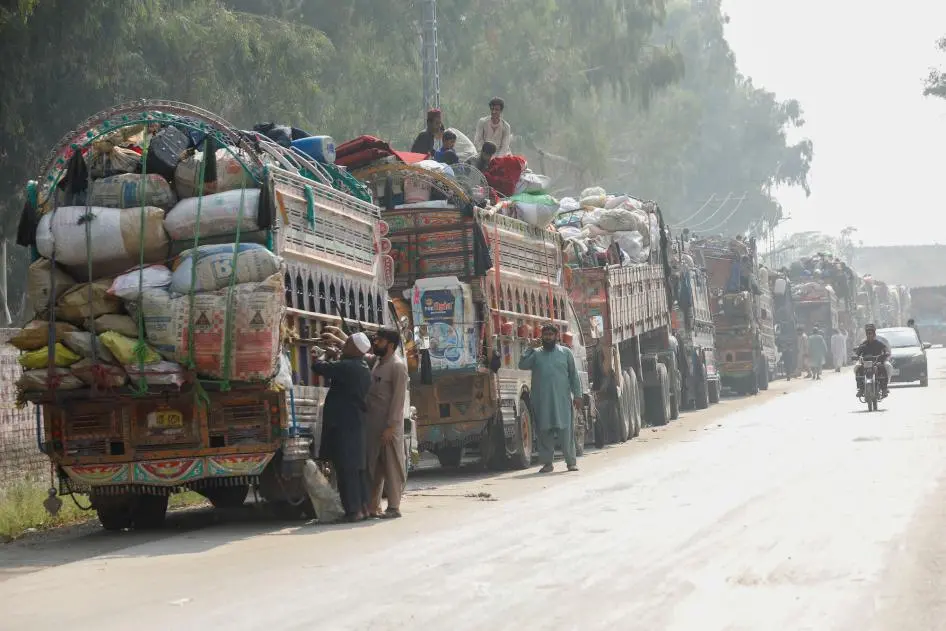After the idea of globalization and free movement, the world became a global village. The ease of transportation and traveling started to mobilize the world population. People started moving to the countries of their own choice and ended up settling there under many circumstances. Asylum-seeking and becoming a refugee is one of many such situations. On 10 December 1948, United Nations adopted the United Nations Declaration of Human Rights (UN 1948). Under Article 14 of this declaration, a person can get asylum in any country of the world to protect him or herself from being persecuted. Another article, article 13, argues that a person has the freedom to move and reside in any state. Both of these articles highlight that freedom of movement and seeking refuge as significant human rights.
Pakistan has not signed any international refugee law or international standards regarding the refugees’ rights. Pakistan is not obliged to abide by any standards set by the international community in regard to refugee rights. So, in 1993 The United Nations High Commissioner for Refugees and the government of Pakistan signed a cooperation agreement. Under this agreement, the agency of the UN has the right to register and look after the refugees on behalf of the government of Pakistan.
According to Amnesty International, Afghans started moving to Pakistan at the time of the communist regime of Taraki and Amin. At the time approx. 400,000 people came to Pakistan. This number eventually grew right after the Soviet invasion of Afghanistan. According to the stats, more than 4 million population came to Pakistan at that time and remained growing (Amnesty 2019). As the wartime ended in the country many went back but most of them still stayed in Pakistan. After the recent developments in Afghanistan i.e., the withdrawal of the US and Taliban takeover around 600,000 people with various profiles – journalists, human rights activists, educationists, musicians, and vulnerable populations came to Pakistan to protect themselves from being persecuted and seek asylum.
There are four categories of Afghans in Pakistan. First are the POR (Proof of Registration) card holders. UNHCR started its registration drive back in the 2000s. The POR card holders are those Afghan refugees who got themselves registered in 2006-2007. At the time they counted from 2.1 to 2.2 million but currently, they are only 1.3 million, according to the UHNCR spokesperson Qaiser Khan Afridi. The second category is ACC (Afghan Citizen Cards) card holders. They were registered back in 2017 as a result of the domestic developments of Pakistan – NAP. Around 8,40,000 undocumented people got themselves documented with the help of the UN agency IOM. Both of these categories are known as “refugees” at UNHCR and are also registered with NADRA. The third category is those refugees who did not get themselves registered even after the 2017 drive. They counted 4 to 5 lacs according to the estimates of the government of Pakistan. The fourth category is of those who fled to Pakistan after the Taliban takeover of Afghanistan to get themselves protected from persecution by the recent government. They count around 6 lacs and are termed as “asylum seekers – a step before becoming legal refugees” in UNHCR. The last two are those who are unregistered.
Afghanistan as a country has witnessed a very hard history. The war-torn country followed by an extremist group takeover as the de facto government has made the situation even more complex. The country is currently facing many economic, political, and social challenges both at national and international levels. The economy is not working progressively, many areas face food shortages and terrorism. Moreover, it was recently hit by a severe earthquake. The country is facing both humanitarian and human rights challenges. There is a mass violation of women’s rights in the country where they are being stopped from attending schools, colleges, and public places. In 2021, many people such as journalists, activists, and musicians fled to Pakistan to get refuge against the persecution.
Recently, the government of Pakistan decided to send the unregistered refugees back to their homeland. This population counts up to 1.7 million according to the BBC reports. (Davies 2023) Sending this huge number of populations back forcefully in these difficult circumstances is a mass human rights violation. The spokesperson of UNHCR in his interview conducted in November 2023 said that “many of them have no land to go and live in, winter is approaching, they do not have basic facilities there and the country is also not in good economic conditions. So, this is a matter of grave concern for UNHCR.”
The government of Pakistan gave these illegal refugees a deadline of 1 November to leave. The deportation drive is only targeting illegal and undocumented refugees, but the situation is a bit different on the ground. The legal and registered refugees are also being harassed and pressured. According to Qaiser, UNHCR has been receiving such reports from different parts of the country, but the number is relatively high in Punjab and lowest in Khyber Pakhtunkhwa. Adding to it, he argued that this is being done to make them take the decision and go back voluntarily. UNHCR has taken different steps like advocacy, information dissemination, advice, and legal support programs (in case they get persecuted) and assisting through an NGO SHARP.
On a question about the challenges these refugees are facing on the border like health and sanitation problems, medical facilities, and food and shelter services, Qaiser argued that UNHCR at the time is not engaged at the border. The government of Pakistan reassured UNHCR to provide these facilities at the border. However, UNHCR, amid these mismanagements is monitoring the situation at the border and may get engaged later.
The government of Pakistan after hosting these refugees for more than 40 years, decided to take this unfavorable step to serve its economic, social, and political interests. The deportation will reduce the financial burden that Pakistan’s government has been facing for years. The targeting of this vulnerable population can make the economy of the country to develop progressively. The social interest the government is trying to serve is to decrease the crime rate in society, as a number of this refugee population was involved in many social crimes. Lastly, we talk about the political interest the government is trying to fulfill is to pressure the Taliban government – once known as Pakistani stooges, to align with their foreign policy interests.
UNHCR is monitoring the situation with great concern. UNHCR has asked the government to re-relook its policy, as it will put the vulnerable population in a very difficult situation. According to the spokesperson of UNHCR, they are constantly in touch with the government. They have conveyed it to the relevant authorities to revisit their policy or come up with a proper mechanism for the smooth flow of this deportation drive.
Table of Contents
ToggleBibliography
Amnesty. 2019. “Afghanistan’s refugees: forty years of dispossession.” Amnesty International.
Davies, Caroline. 2023. “Afghan refugees forced to leave Pakistan say they have nothing.” BBC.
1948. “History of Declaration .” United Nations.

Manahil Baz
Manahil Baz is a passionate researcher and graduate of International Relations from Bahria University Islamabad. With a focus on international relations and human rights especially those of marginalized communities, ethnic identities, terrorism, and social tensions, Manahil strives to contribute insightful perspectives to the global discourse on these critical issues and foster a positive change in the realm of global affairs.

Heer Biyar Ahmed
Heer Biyar Ahmed is a dedicated student of International Relations at Bahria University, Islamabad, specializing in South Asian politics with a keen focus on Afghanistan, China, Pakistan, and India.













